![]() Let's talk about a dirty little secret of spin: Pace matters. As a spinner you don't have any need to get the ball up the other end as fast as you can. You leave that to the real quick bowlers. But you also know there is a speed that is right for spin.
Let's talk about a dirty little secret of spin: Pace matters. As a spinner you don't have any need to get the ball up the other end as fast as you can. You leave that to the real quick bowlers. But you also know there is a speed that is right for spin.
Too slow and the batsman gains more time to pick the ball and play it.
Too fast and you lose drift, dip, accuracy and spin. You may as well joint the dark side; and become a medium pacer. Yuk.
You want to find that perfect balance. You feel like you want to tap the pace up without losing the rip that leads to the late dipping, big turning ball you love to bowl. So how do you do that?
What is a good pace for spin?
First, let's talk about numbers and find out the optimal pace. It's hard to judge what is "right".
You look on TV and see some professional guys bowling stock balls at almost 90kph (55mph). Other pros are much slower, perhaps 75kph (mid 40's mph). The average club or school spinner ranges between 50-65kph. Then there are quicker and slower balls depending on pitch conditions and batsmen style.
It's here that many spinners fall into a trap laid by the seam up crowd. They look at the number on the speed gun as the only indicator of pace. But with spin you are not simply working with a straight line from hand to stumps. You are working in multiple directions at once.
So, a ball that is traveling more slowly because it's been spun up and has dip on it, is totally different from a flatter ball fired in at greater pace. They both may turn the same amount but the dipping ball is harder to read and will bounce more. It's a similar story for the ball that drifts sideways in the air.
On some pitches against some batsmen you will bowl a little quicker and at other times you will bowl a little slower.
So, your first job is to work out what pace causes batsmen trouble. You can do this in your nets against your own team's batsmen. Ask them to give you feedback about what is easier and what is harder to play when you bowl and you start to learn the art of matching your pace to the conditions.
Start the loop
However, despite this nod to the art of spin, let's use some science to push the numbers up.
Your first step is to start a feedback loop. This is because it's much easier to improve when you measure progress. So, track your current pace with PitchVision or a speed gun. Over time you can see which changes improve your pace and which changes make no difference.
With a feedback loop in place, you are in a powerful position to drag your speed up kicking and screaming.
Again, don't obsess if the system tells you your average speed is 45mph and you heard that Swann used to bowl at 55mph. 45 might be plenty at the level you play, work on getting out the batsmen you bowl at, not batsmen on the TV (that will come later, when you are on TV).
Run up faster
Once you are tracking the raw numbers, and have an idea of the pace you want, you can work on technique.
The first easy trick here is to run up faster.
It's all about momentum: The faster you enter your delivery stride, the more energy you can transfer into the ball. And the more energy, the more speed. That's physics!
It's important to remember to maintain your action. It's easy to try and barrel the ball down with an almighty heave and clench of the teeth. In reality, you don't need to do anything except bowl the same and let the extra momentum do all the work for you.
Try a few different speeds of run up to see what difference it makes to your pace, and if you feel you are losing accuracy as a result, take a look at if your action is changing as a result. You might want to slow down a bit if the latter is the case.
Use your front arm
The second technical port of call is your front arm. Slower spinners, according to Mark Garaway, tend to forget about using the front arm and so it waves about not contributing much.
But, if you time the movement of your front arm better, you will improve both pace and revs on the ball because you are using it to lead your whole body in a full rotation. So what does this look like?
- Your front elbow is up when your back foot lands.
- As your front foot lands, bend your front arm at the elbow towards the batsman as if you are grabbing her collar (if the arm drops before your front foot lands, you lose pace).
- Use this full extension to pull your front arm down, rotate your shoulders and release the ball at the top.
- Follow through. This will happen automatically if you have done everything else right.
![]()
![]()
A bonus tip here is to also use a more braced front leg. It's a technique used by quicker bowlers to improve speed. It's not a universal fix, but you might warm to it, so look at the details here. It's fine to experiment with things to see how they feel. You can always go back to the old way if it doesn't work out.
Get stronger
We have discussed many times the importance of a base of strength and power. Serious spinners have to work out these days beyond just bowling, especially those who want more pace. You can read more here.
But beyond the gym work, you can transfer your strength into your bowling in two ways:
- Throwing medicine balls (1-2kg in weight)
- Bowling heavy balls
Both these techniques allow you to cross the bridge between being strong in the gym and actually bowling faster (and with more stamina). That's because they are both more like bowling than working out, but they still provide a training effect.
Heavy ball bowling is especially new and experimental in cricket. The method has been used for years in power throwing sports like the shot put. Now, lead by Steffan Jones, coaches are helping cricketers bowl faster with the method.
The trick is to use both a slightly heavier and slightly lighter ball alongside a normal weight ball. The heavier ball can be up to 260g, the lighter one will be 110g. To compare, a normal adult ball is 155-163g. The amount you bowl will depend on the time of year. In season is a low volume, pre-season is higher volume.
I have been hearing great results for this method from progressive coaches like Steffan, but you will need to experiment to find out what works for you. This is a far from set in stone proven method. However, all logic (and evidence so far) points to a good outcome if you try.
Some science, some art
To summarise, bowling quicker as a spinner sounds simple; an expression of science to produce a measurable result. And this article has given you some principles to try to get that speed measurement up.
- Track your outcomes.
- Increase run up speed.
- Use your front arm to start a powerful rotation.
- Brace your front leg.
- Get stronger.
But spin is also an art. The number on the screen does not tell the whole story of drift and dip. It doesn't take conditions into account. Science cannot know the state of mind of the bowler or the batsman. So see these methods as just one tool in your toolkit. If pace helps, use it. If you can take 100 wickets a year bowling at 30mph then why would you change?
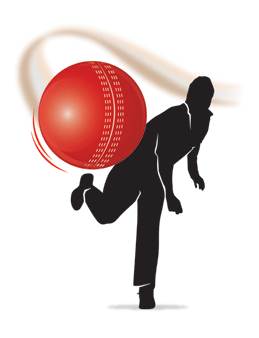 Menno Gazendam is author of Spin Bowling Project. Get your free 8 week spin bowling course here
Menno Gazendam is author of Spin Bowling Project. Get your free 8 week spin bowling course here
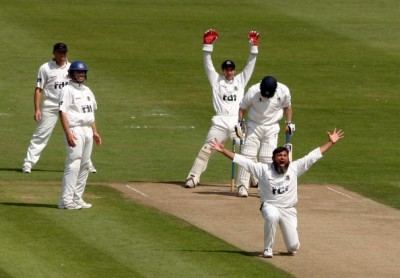 This is a guest article from Harry Shapiro, spin bowling coach.
This is a guest article from Harry Shapiro, spin bowling coach. 

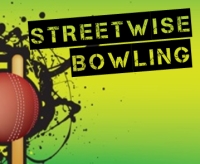 Every bowler needs a plan.
Every bowler needs a plan.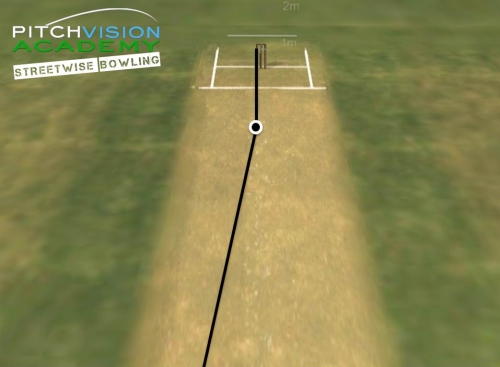
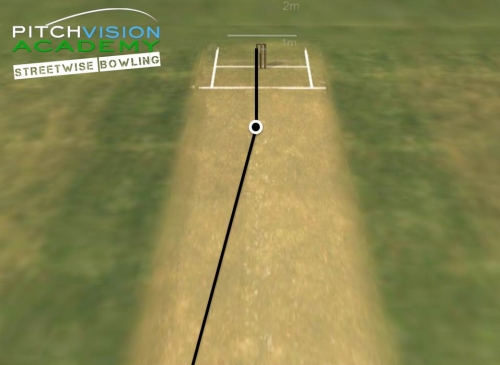
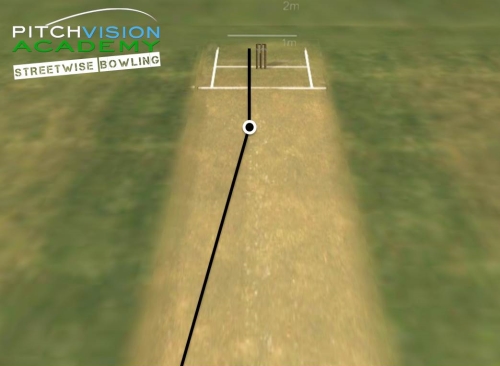

 I'll cut to the chase; there is a simple change to your bowling action that is a big hitter in fault correction.
I'll cut to the chase; there is a simple change to your bowling action that is a big hitter in fault correction..jpg)

 Let me ask you something; how much better a bowler would you be if you could hit a perfect line and length?
Let me ask you something; how much better a bowler would you be if you could hit a perfect line and length?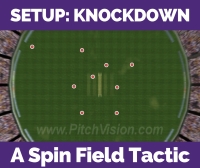 Max Andrews is a freelance coach on PitchVision Academy
Max Andrews is a freelance coach on PitchVision Academy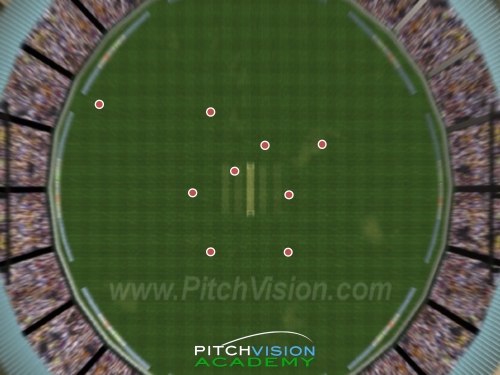
 Nets are used poorly by bowlers.
Nets are used poorly by bowlers.

 Watching a good leg spinner operate against an average batsman is like watching a lion play with its prey before going in for the kill. The helpless beast has no idea what’s going on and no way to combat it.
Watching a good leg spinner operate against an average batsman is like watching a lion play with its prey before going in for the kill. The helpless beast has no idea what’s going on and no way to combat it. 



 Let's talk about a dirty little secret of spin: Pace matters. As a spinner you don't have any need to get the ball up the other end as fast as you can. You leave that to the real quick bowlers. But you also know there is a speed that is right for spin.
Let's talk about a dirty little secret of spin: Pace matters. As a spinner you don't have any need to get the ball up the other end as fast as you can. You leave that to the real quick bowlers. But you also know there is a speed that is right for spin. 

 This is a guest article from
This is a guest article from